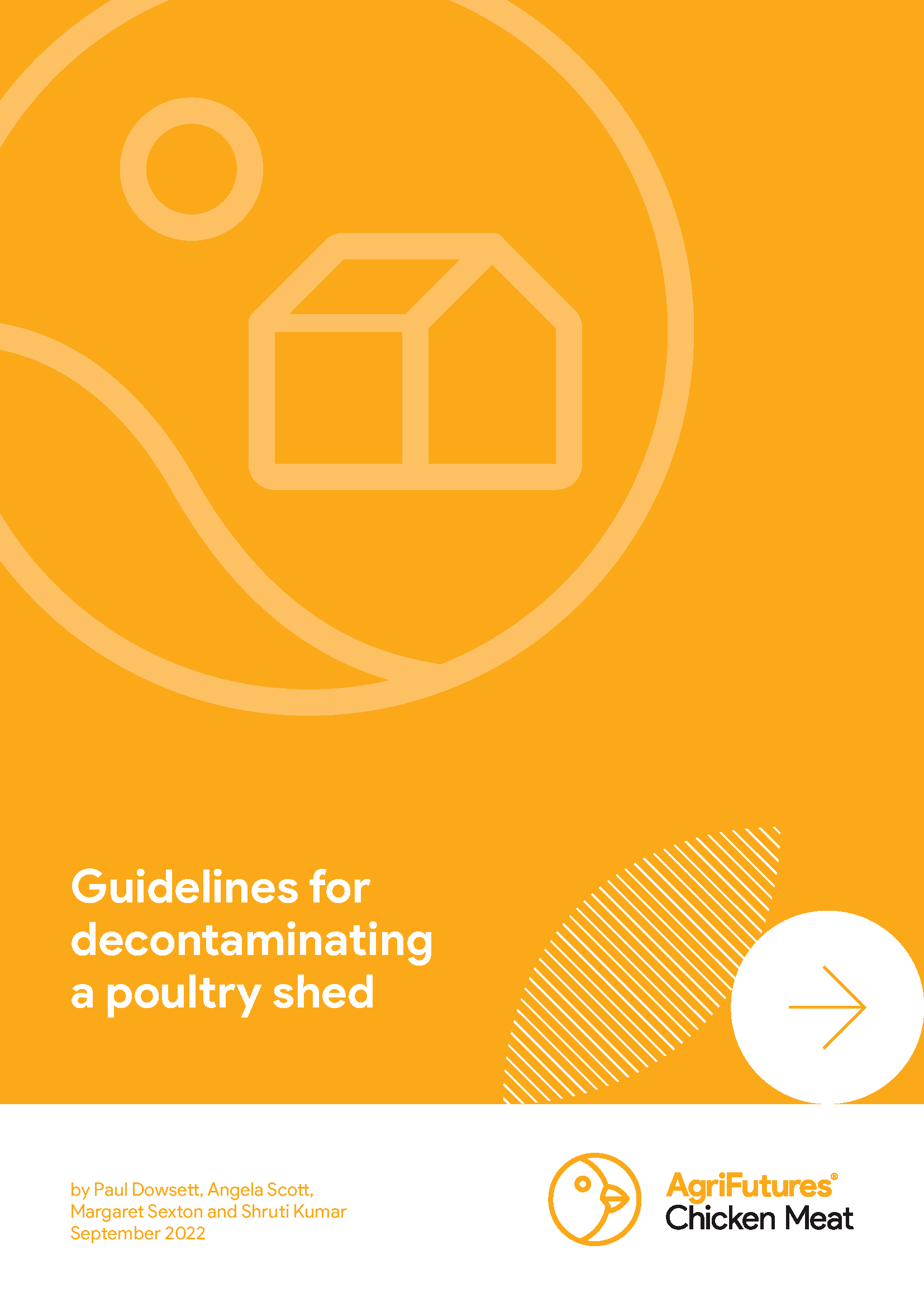In the Australian poultry industry, decontamination of the shed is typically performed at the end of each production cycle to prevent the spread of disease-causing organisms between old and new batches of birds. These organisms include poultry-specific pathogens and foodborne pathogens present on the farm. Decontamination is a combination of physical and chemical processes that kill or reduce the load of microbes present on the farm at the end of a production cycle or after a disease outbreak. Decontamination reduces the intensity and frequency of emergency animal diseases (EADs), notifiable diseases and foodborne illnesses. It is essential to follow the proper steps and sequence of cleaning and sanitisation to prevent recontamination of surfaces.
The Australian poultry industry has had numerous encounters with EADs, such as highly pathogenic avian influenza, Newcastle disease and highly virulent infectious bursal disease. These diseases have the potential to cause high mortality among birds. EADs can also lead to closure of farms, trade restrictions, job losses and other indirect adverse effects such as consumer hesitation to purchase poultry products. Furthermore, management and eradication of these diseases is complex and expensive. Hence, effective decontamination is essential in preventing these diseases on farms. An ideal decontamination protocol involves appropriate cleaning and disinfection steps.
The project was funded by the AgriFutures Chicken Meat Program and managed by Poultry Hub Australia. For more information and resources, visit https://agrifutures.com.au/chicken-meat/.





